10 high-tech concept cars from the 1980s
If concepts from the 1960s experimented with space age styling and dramatic shapes, and 1970s concepts could be described as psychedelic wedges, the 1980s was an era of extreme aerodynamics and high technology.
Virtually every concept from the decade of cassette tapes and neon lights promised some kind of advancement in drag coefficient, fuel economy, or electronic features that could barely have been dreamt of in the decades before. Today they seem seem commonplace.
Narrowing down the options was surprisingly tricky, but below we’ve selected 10 concepts that defined the decade and wowed the crowds at motor shows.
Ford AFV (1982)

There’s a cognitive disconnect between the styling of the 1982 Ford AFV concept and the fact that underneath the bonnet there was a 1.6-liter CVH thrashing away like some kind of bog-basic Escort.
Not that the CVH wasn’t modified, though not as you might expect. AFV stood for Alternative Fuel Vehicle, but it should probably have been called the MFV, as it could run on multiple fuels—natural gas, ethanol, alcohol, diesel, or just plain ol’ simple gasoline.
Ford suggested that while the car itself would be more expensive than a conventional car, running it on natural gas—such as you’d use in your house—would be cheaper, and could be refueled by a compressor at home. In retrospect, given current energy prices, this doesn’t sound so sensible, but you could always stick some diesel in the tank, of course.
Mazda MX-81 Aria (1981)
Here’s one to bust your noodle. Perhaps, you’re thinking, it’s a precursor to the Citroën BX. Or maybe it’s the concept that Marcello Gandini at Bertone evolved into the BX, the Volvo Tundra. The reality is neither, but also both.
Designed under Marc Dechamps, the Mazda MX-81 Aria of 1981 was indeed inspired by Gandini’s 1979 Tundra concept, so could be considered an alternate-history BX. It was low-drag, with a 0.29 Cd rating, and modest underneath, based on the contemporary Mazda 323.
If it was striking outside, that was nothing compared to the interior, whose ‘steering wheel’ was more of a belt encircling an instrument display containing various controls. You could call it an experimental touch, which is, conveniently, what the X in “MX” stands for. And the MX-81 was the first Mazda to use this now-familiar combination of letters.
Mercedes-Benz NAFA (1981)
“A Smart before the Smart” would be a succinct way to describe the Mercedes NAFA concept of 1981. It would be nearly two decades before the Smart City Coupé (later Fortwo) would launch to the public, but the concept was clearly not new to Mercedes-Benz.
The thing is, people were already worried about traffic and pollution in the early 1980s, even if it didn’t dominate discourse like it does today. Several of the concepts on this page were built in response to those concerns but none as overly as the NAFA, 2.5 meters long (just like the original Smart) and pitched as being parkable nose-on to the curb.
The NAFA’s sliding doors never made it onto any Smart though (but they would find their way onto Peugeot’s quirky 1007), nor did its front-wheel drive layout. All of this was well before the front-drive A-class, too. One wonders whether the NAFA offered similar levels of quality to contemporary Mercedes. Those push-button door handles certainly look promising.
MG EX-E (1985)
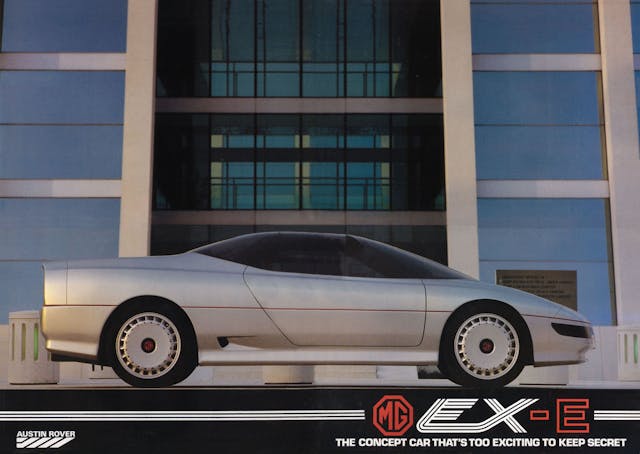
You’ll likely be more familiar with the MG EX-E concept than the others on this list, but arriving right in the middle of the 1980s, and being one of the more striking concepts of the era. This was the MG supercar that never was.
Remarkably, this sleek, high-tech looking car sat atop the mid-engined platform of the rather more blunt MG Metro 6R4. Not the most natural of bases, but not a bad one either given the 6R4’s abilities, and with a Cd of 0.24, the aluminum spaceframe, plastic-paneled dart had the same aero focus as many ‘80s concepts.
According to design director Roy Axe himself, speaking to AROnline, it was never likely to make production—but as a shop window for the design and engineering talent at BL at the time, it did the trick.
Peugeot Quasar (1984)
Book a trip to L’Aventure Peugeot museum at Mulhouse in France and you can go and see the Peugeot Quasar concept any time you want. We’d fully recommend it, partly because the museum is excellent, and partly because the Quasar is a prime wedge of 1980s madness.
Like the MG EX-E above, you’ll find Group B bones beneath the Quasar, in this case the mighty 205 T16 which dominated the WRC in 1985 and 1986. And like the EX-E, it abandoned the hatchback form for a pure supercar wedge shape – though with an exposed engine compartment for the 600-hp, twin-turbo four, the Peugeot’s styling was more dramatic even than the MG.
The interior was pure sci-fi. The work of Paul Bracq—celebrated designer behind some of BMW and Mercedes’ most respected shapes, and the cabins for Peugeot’s 505 and 604—the scarlet-trimmed space was straight out of Blade Runner and accessed via scissor doors.
Pontiac Pursuit (1987)
The first of two Pontiacs in this list, but too good to miss. A more 1980s-looking car you’d struggle to find. It had everything, from an aerodynamic form that wouldn’t do disservice to the aviation industry, to wild technology, turbocharging, digital instruments, and more.
Technologically, it included features such as drive-by-wire steering, and the button-festooned wheel moved only half a turn—that’s just 90 degrees—lock to lock. While that didn’t make it onto any subsequent Pontiac, the buttons did: several early-‘90s Pontiacs had a wheel like a graphical calculator.
U.S. manufacturers were still proponents of big cubes in the 1980s, but the Pursuit instead used a 2.0-liter, four-cylinder turbo engine, making a healthy (for the time) 200-hp. And there was even a manual gearbox (one thing the car didn’t accurately predict was the future, as it turns out).
Pontiac Trans Sport (1986)
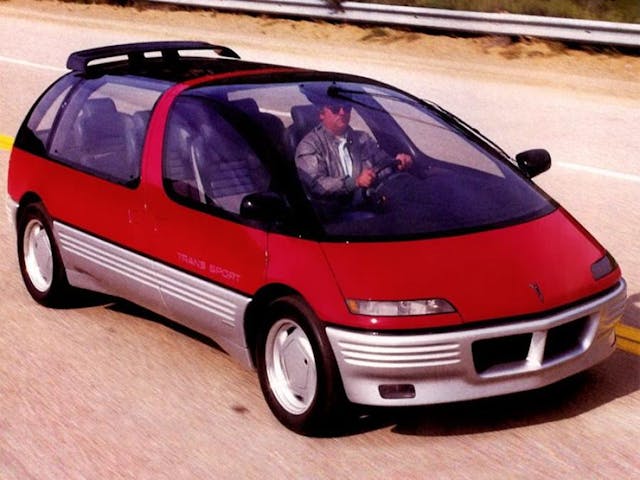
The MPV, people carrier, minivan—call it what you will—was yet to truly take off in the 1980s, though the seeds were there. In Europe, Renault launched the Espace in 1984, which got off to a slow start but was finding a market of its own. And in the U.S., Chrysler’s Dodge Caravan and Plymouth Voyager were attracting family buyers too, having debuted in late 1983.
General Motors was keen to find its own niche in the market, and would preview its vision of the monobox people-carrier in 1986, using its blue-collar sports brand, Pontiac. The Trans Sport looked decades ahead of Chrysler’s vans, previewing the curves of the 1990s and featuring a glassy canopy that wouldn’t be out of place on an aircraft.
A sporty stance and gull-wing rear doors only added to the intrigue, and while the production Trans Sport and its stablemates looked more like a portable vacuum cleaner—earning them the “dustbuster” nickname—they still owed plenty to one of the most striking, and most practical concepts of the 1980s.
Porsche Panamericana (1989)

At a glance—a really, really brief glance, perhaps while you’re sleepy and/or inebriated—the Panamericana concept of 1989 could pass for a 911. But dwell any longer and the vaguely 911-like proportions and detailing diverge wildly from the brand’s production models.
Named for the Carrera Panamericana races in which Porsche used to successfully compete, the concept was based on the contemporary 964-generation 911 (Carrera 4, naturally). True to concept form, it lent its smooth curves to the 993 that would follow.
The chunky tires, cut-away bodywork and skeletal (and removable) roof gave it the vibe of a 911 beach buggy. Despite tentative plans for a limited run of road cars, nothing ever came of the Panamericana, though Porsche’s off-road aspirations would eventually be sated by the Cayenne.
Volkswagen Scooter (1986)

Volkswagen has explored city transportation several times throughout its history, with few more striking than the Scooter concept unveiled in 1986. The name was deliberate, suggesting a kind of cross between a car and a motorcycle—an idea still explored by cars like the Citroën Ami today.
The tadpole-style three-wheel layout put the entire drivetrain of a Volkswagen Polo up front, powering the front wheels. With low weight, it was brisk: 0-60 was well under ten seconds, 140 mph flat out, with fuel economy of more than 46 mpg.
The compact city car ended up a mere diversion for VW, the group even rejecting Nicholas Hayek’s city car proposal—which would later become the Smart under Daimler-Benz. VW did get close to reviving the Scooter though with 2011’s Nils concept—four-wheeled and electric, but otherwise similarly stripped-back.
Volvo LCP2 (1983)
Volvo has frequently used concept cars more for technological previews than visual ones. You might see some similarities between the LCP2 concept—sometimes called the LCP2000—and later front-drive Volvos, but primarily it was used to experiment with lightweight materials, low fuel consumption, and low drag.
The Light Component Prototype for the year 2000 then featured widespread use of plastics, aluminum, and magnesium. It worked, too, with a claimed curb weight of little more than 1500 pounds.
Compact engines helped too, Volvo exploring a 1.3-liter, three-cylinder turbodiesel from Ricardo in the U.K., and a 1.4-liter ELKO 3-pot turbodiesel with flex-fuel capabilities. Both used a continuously-variable transmission, cribbed from the brand’s ties with DAF, while the drag coefficient was as low as 0.25 Cd. Even by the US EPA’s stricter fuel economy testing, it was claimed to achieve 97 mpg at freeway speeds.
Check out the Hagerty Media homepage so you don’t miss a single story, or better yet, bookmark it.

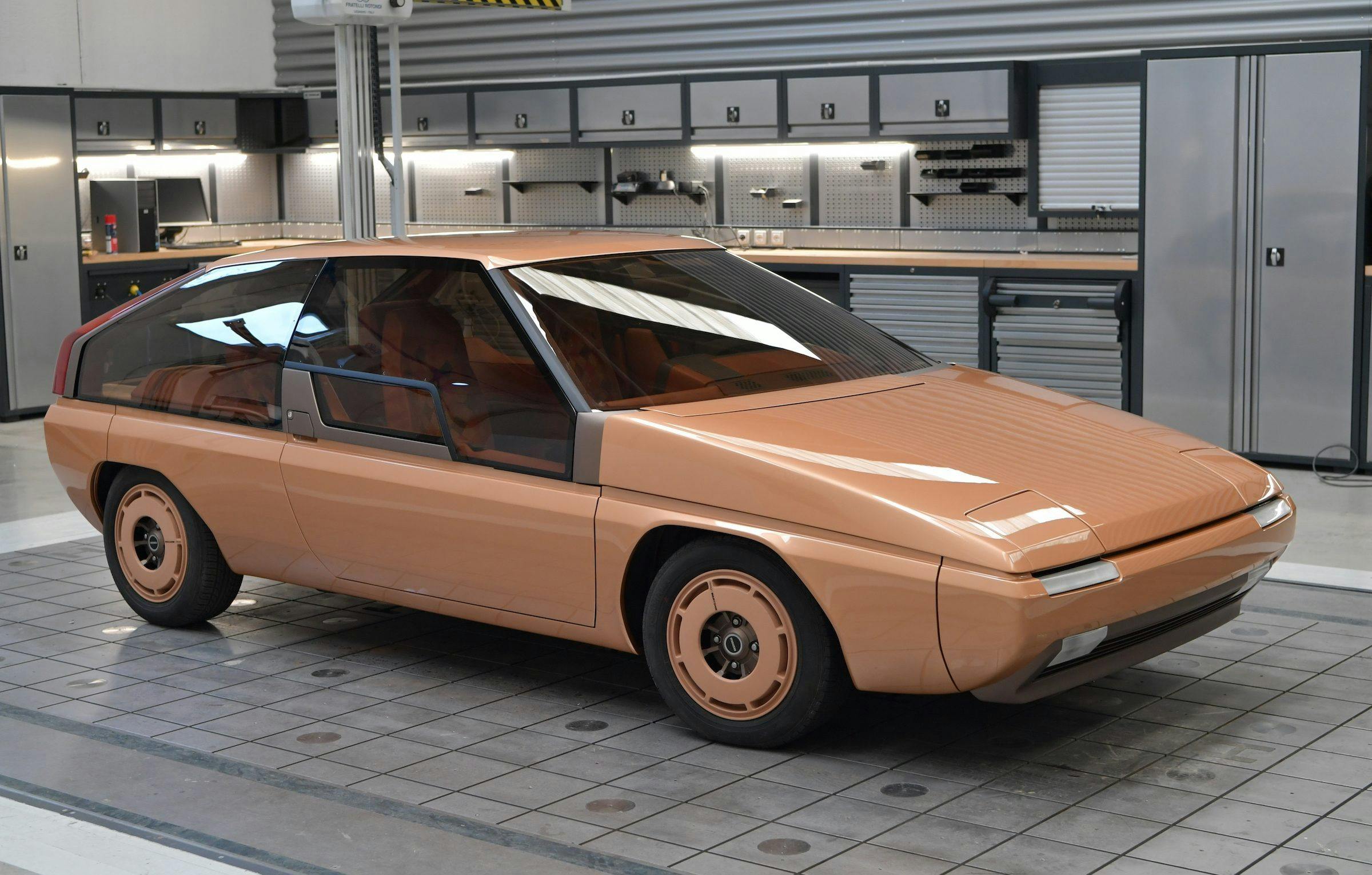
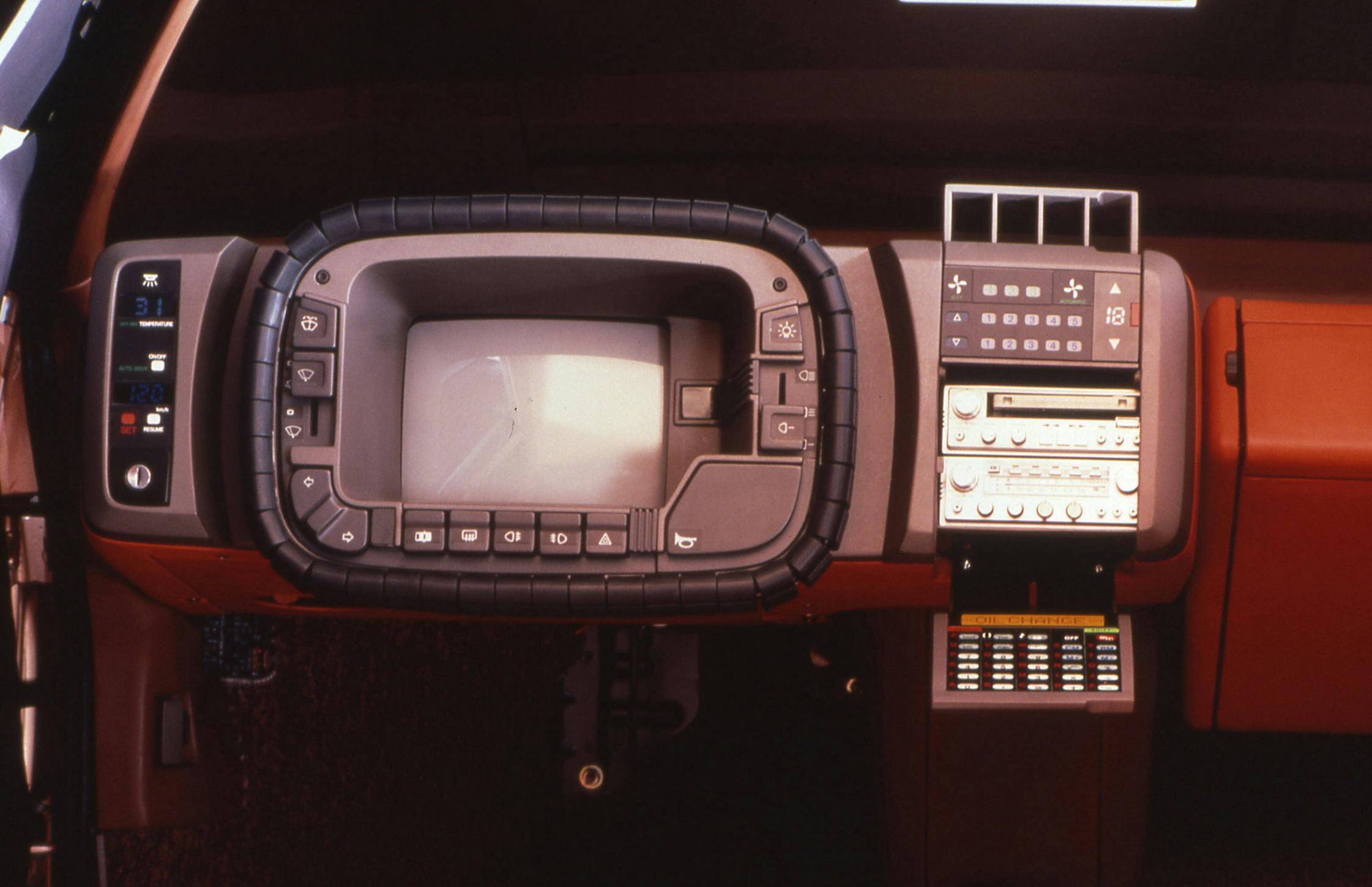
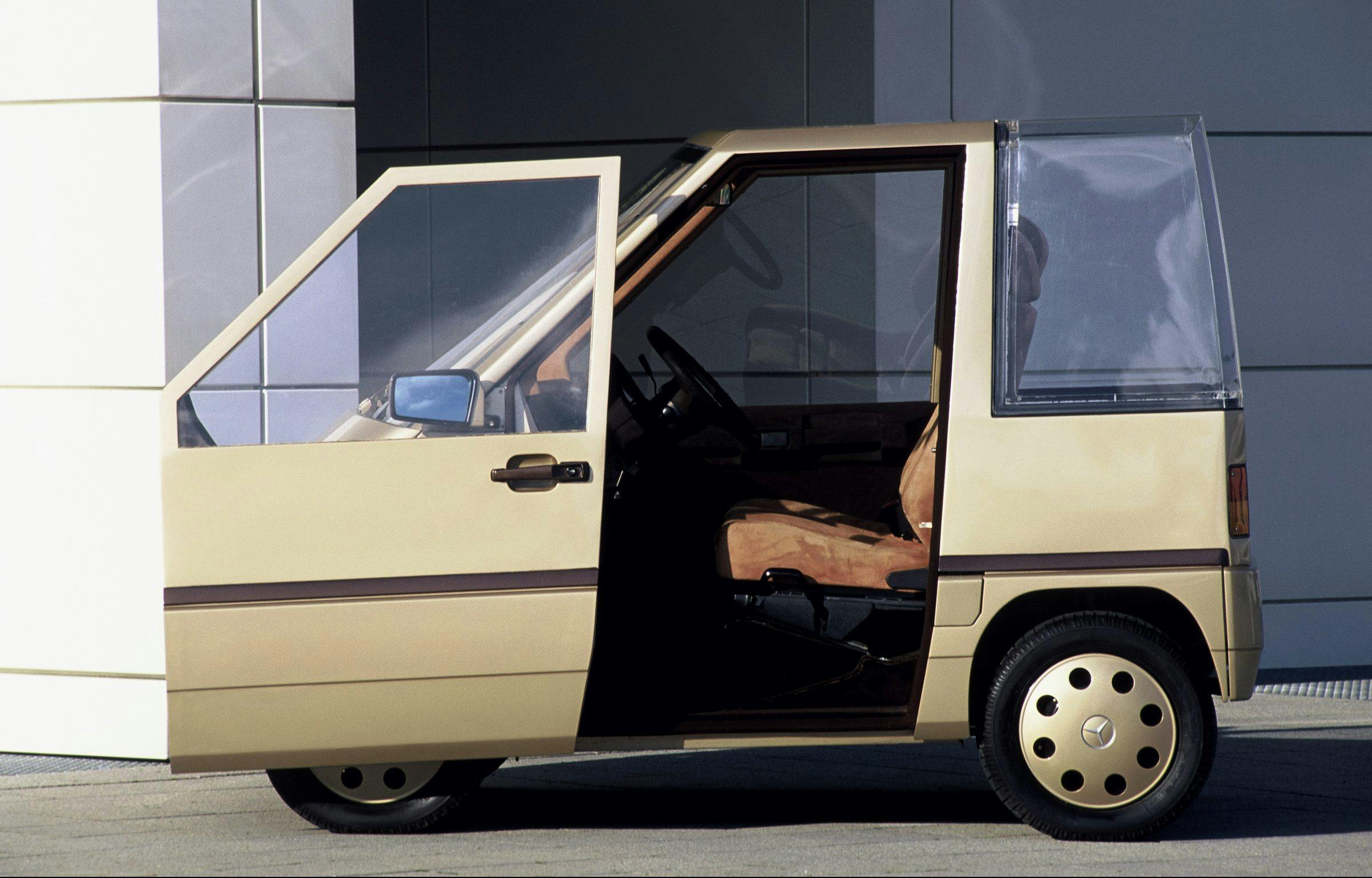
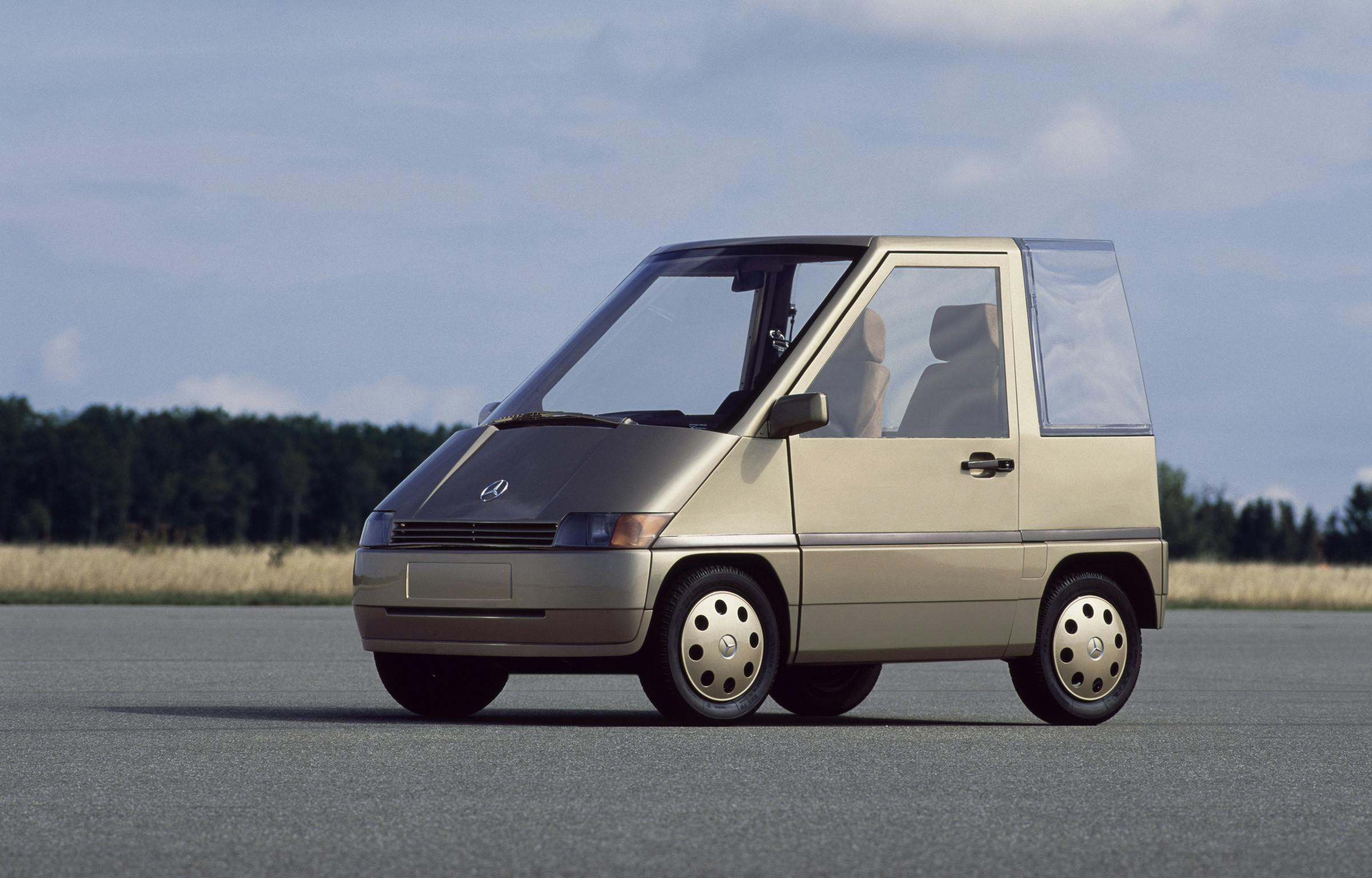
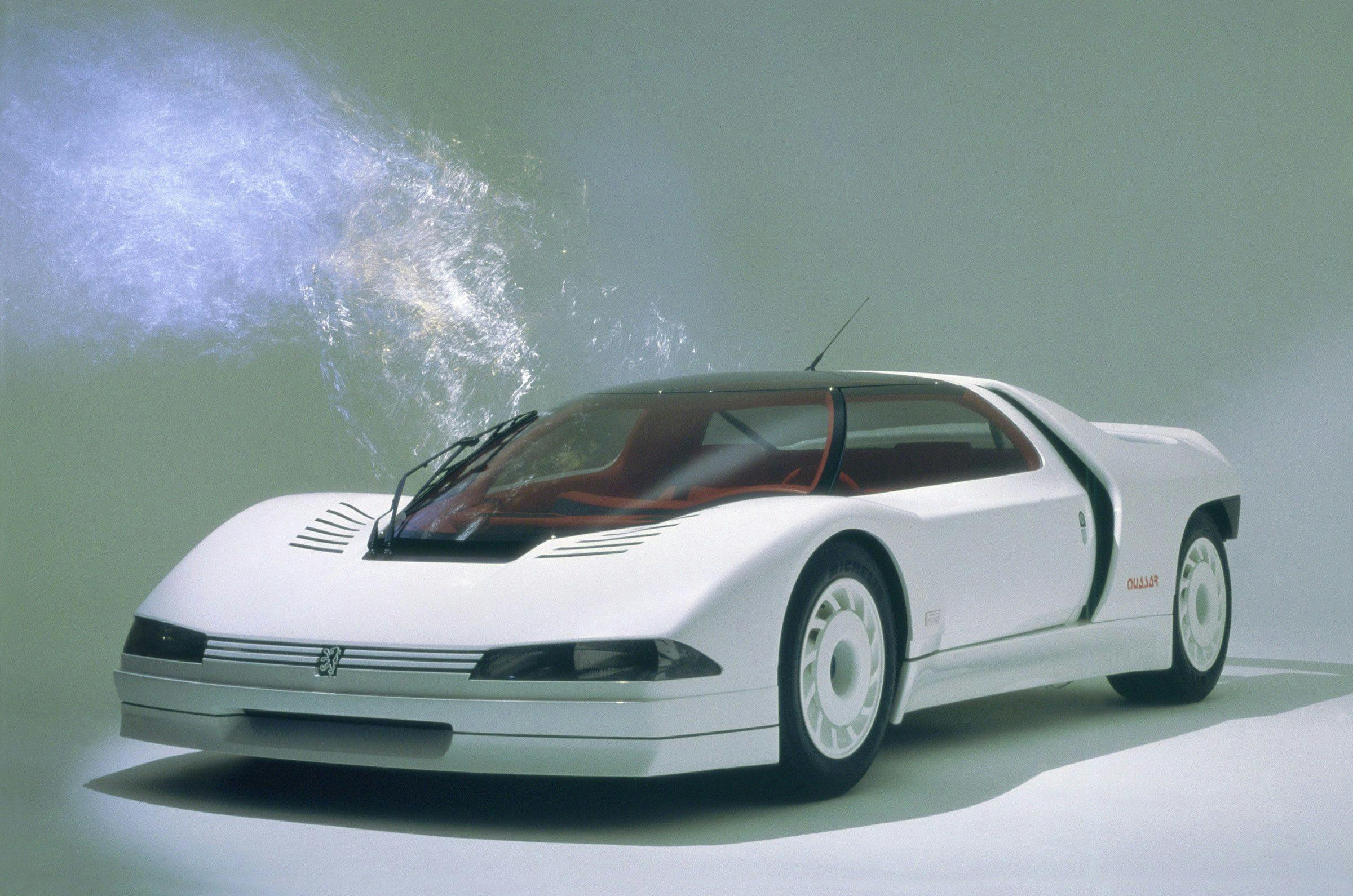
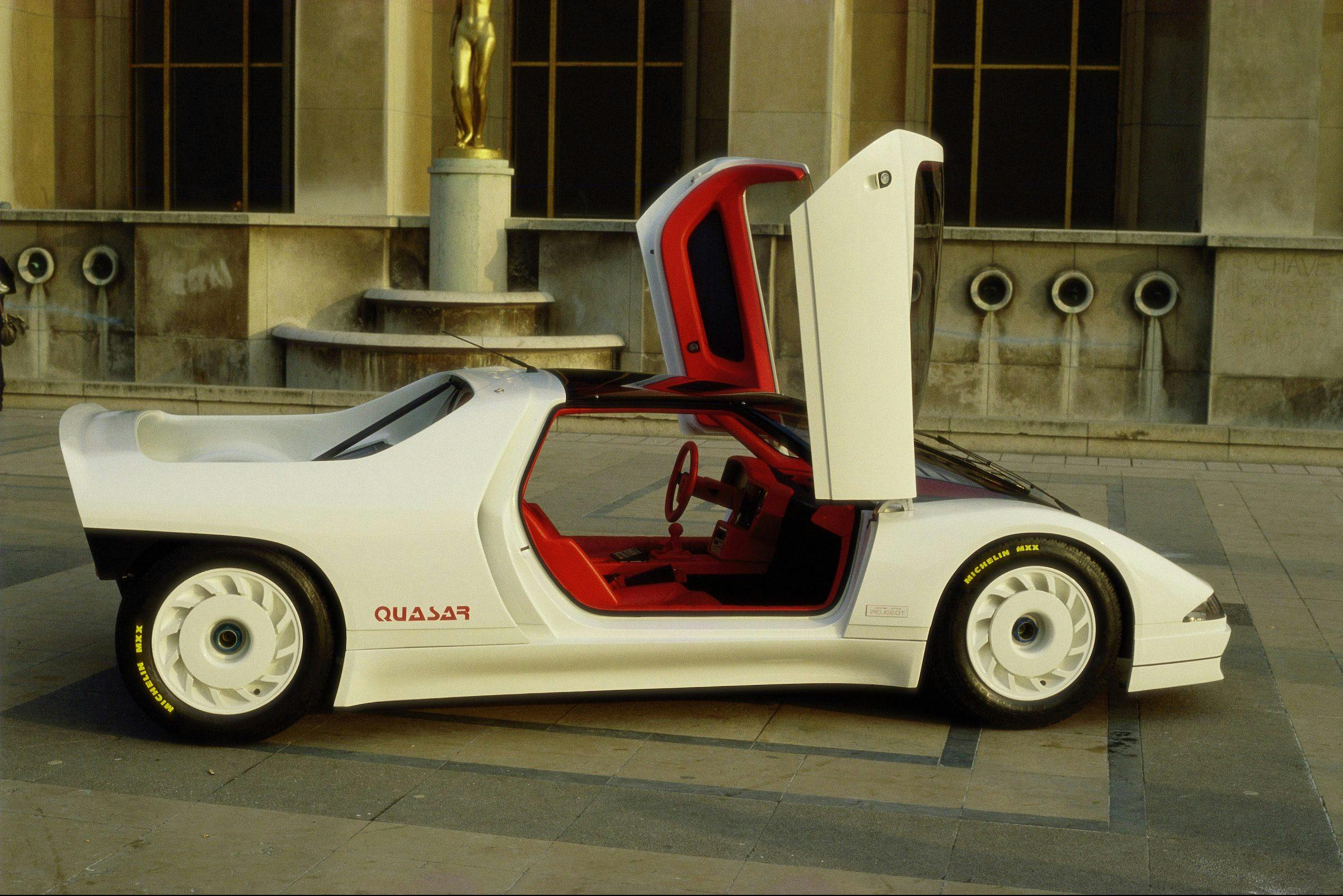
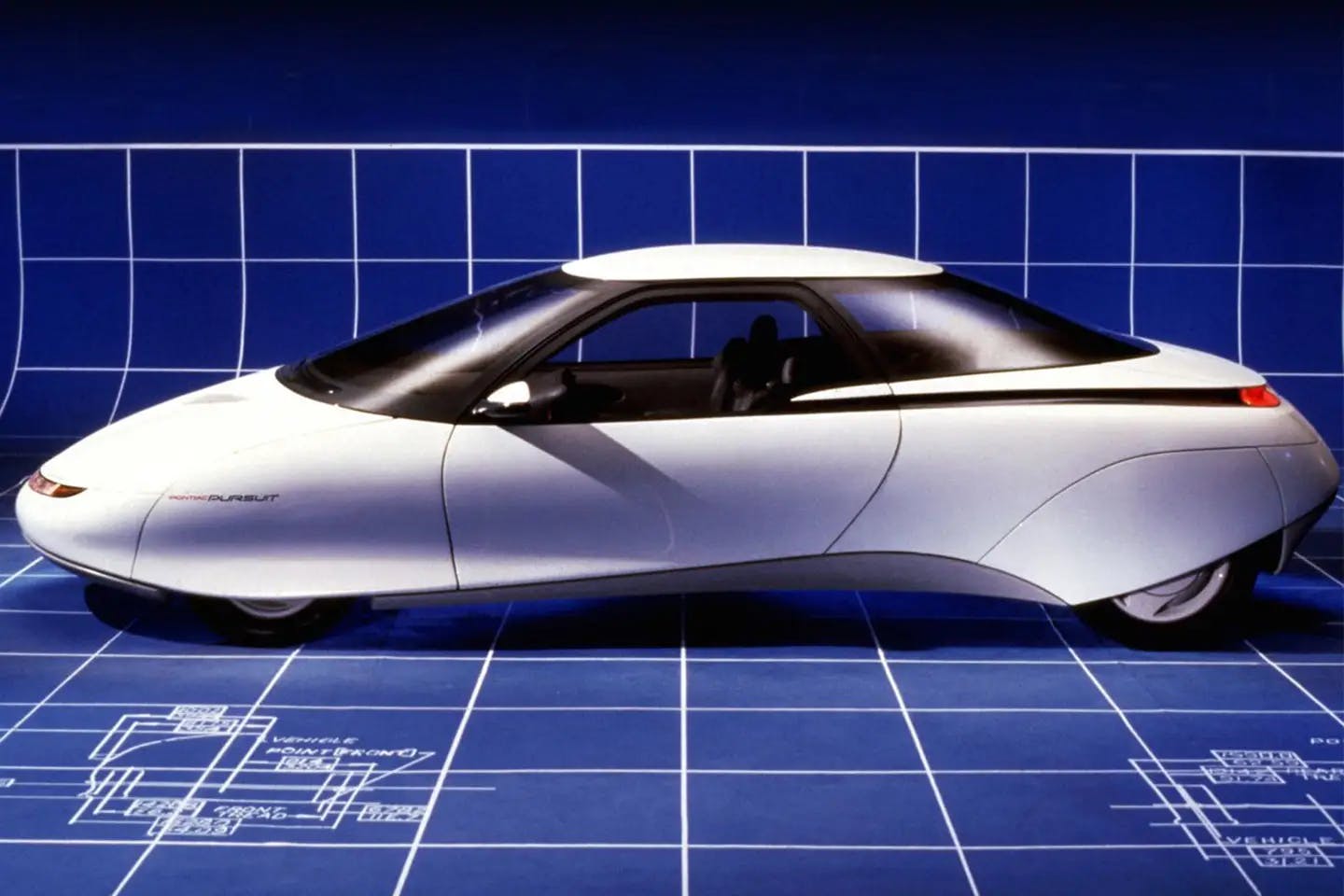
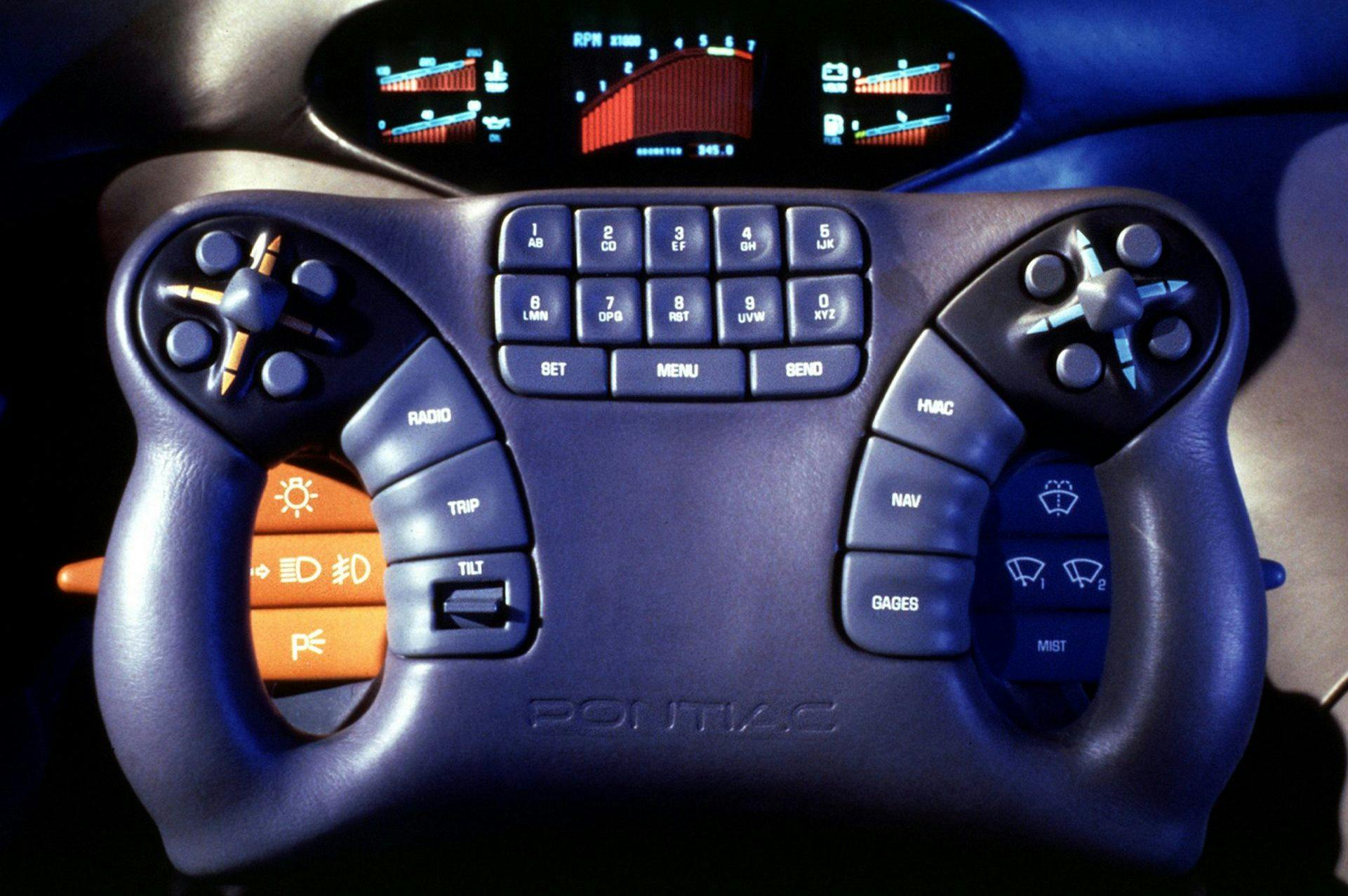
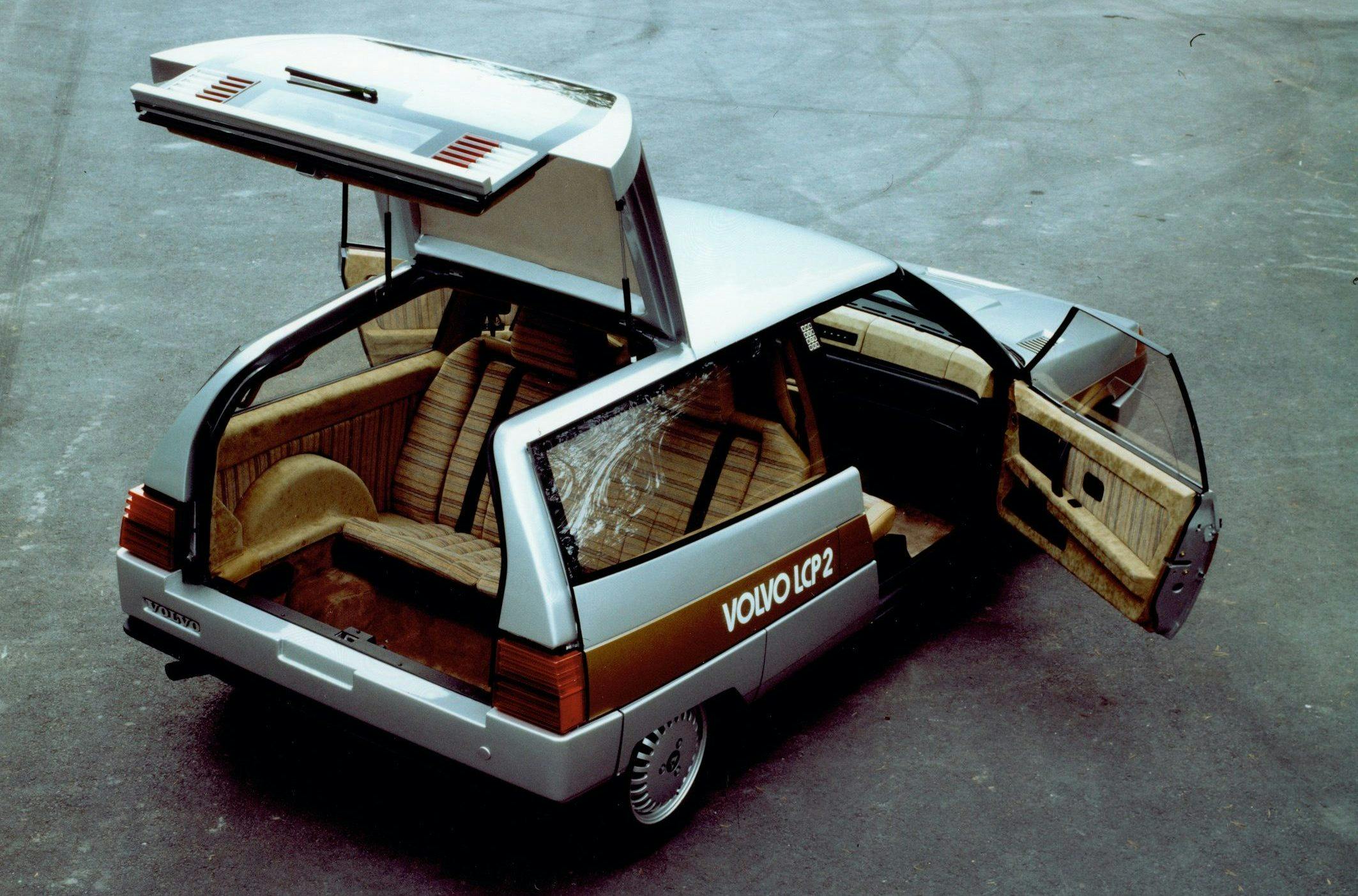
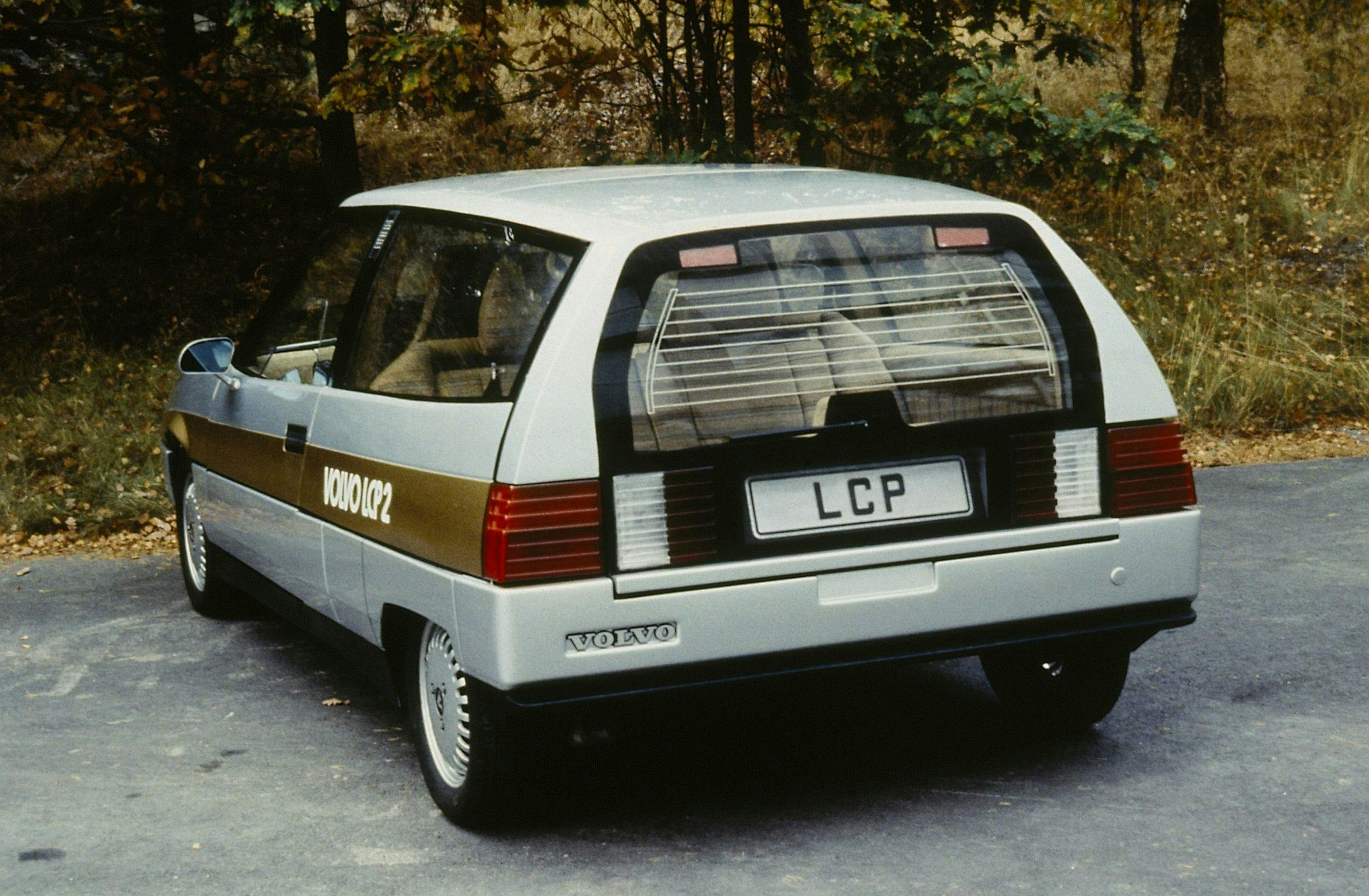
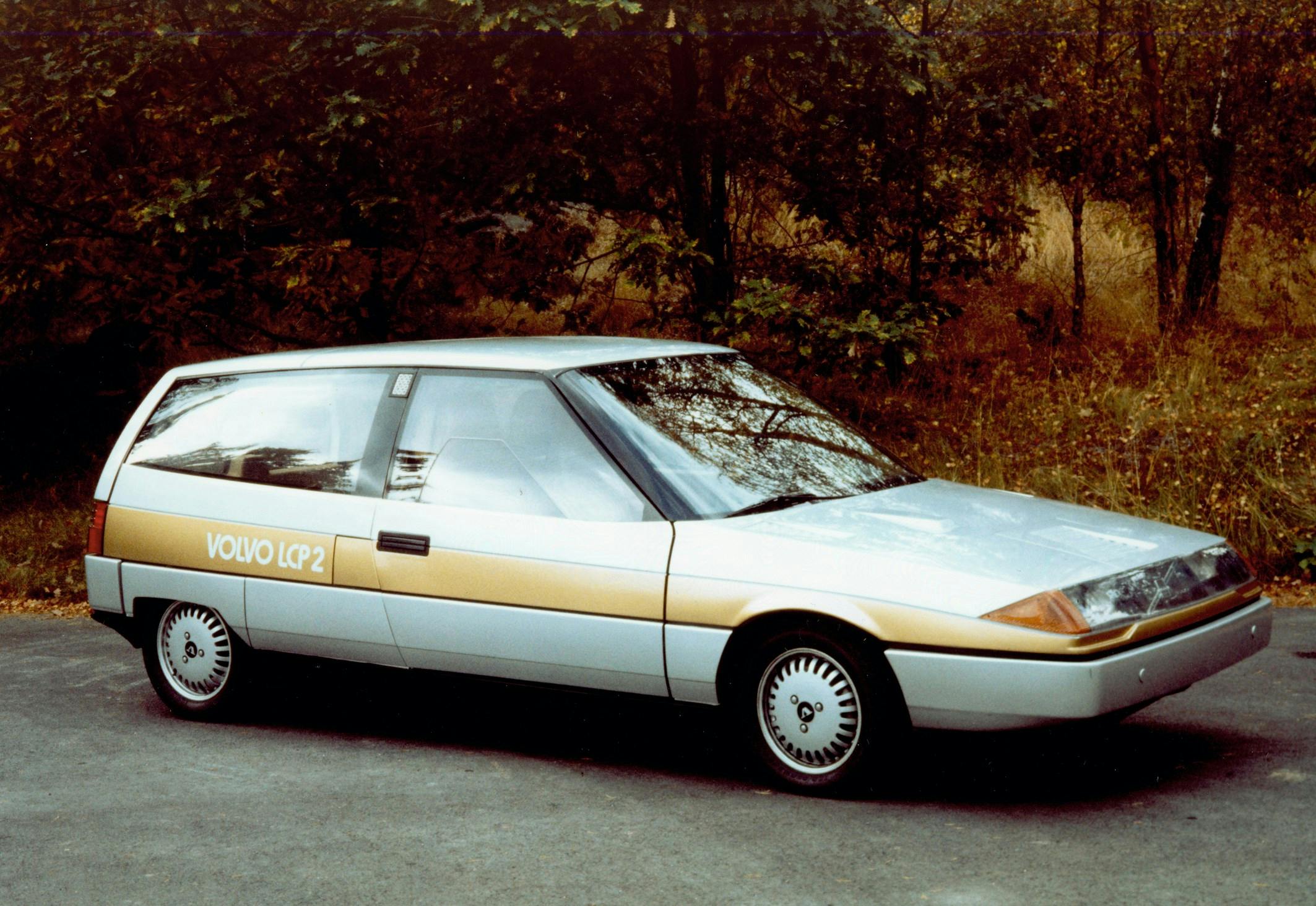


I had a 92 “dustbuster” (though thought Armadillo) with a 3800 engine and was a great people mover/tow car (had the towing package), as close to a minivan as I ever had and came between a 72 Pontiac station wagon and the current 3.6 Jeep Grand Cherokee. Car I like tend to be around for a couple of decades though did not sell the TranSport, gave it to my sister. Trivia: the plastic front body panel tooling was later used for the Reatta.
Is it me (and hindsight) or are each of these far more evident of their national origin than the homogenized me-too stuff we have today?
How about a car whose tech and body lines are to be found today, in all sorts of modern cars?
The Corvette Indy
The Peugeot Quasar looks kind of interesting from some angles as does the Porsche Panamericana but for the most part, concept cars of this era were simply odd or ugly and in many cases both!
There are a couple of these that would have been trendsetters and industry game changers if they were actually put into production. Unfortunately the US automotive industry never cared about the future, just the current bottom line. Hence the reason the big three are all foreign manufactures and the US has had to repeatedly bail out the domestic manufactures. The Pontiac Pursuit while a little over the top had technology that is still being used today like steer by wire and turbochargers. It would have taken guts and some serious engineering rethinking to make it work but it was feasible if the effort was made. Instead they slack off fall back on what ever sells currently and fall out of touch with what the customer wants. Now no more Pontiac. The transport was another vehicle that at the time would have been a game changer. The problem was it needed to be engineered to have a small engine tucked into a tight space. Instead Pontiac went the easy way and mutated the awesome, for the time, vehicle into an automotive dustbuster. It was a joke, and to add insult to injury Toyota produced the almost exact same looking vehicle as the concept soon after. But kept the sleek look by using superior engineering. Guess which brand is still around.
The Ford AFV while hideous had an incredible ability that would still be benificial today. The ability to run on practically any fuel. Gas prices would be kept in check if the Automotive driving public could shop around for the best price per mile fuel. Opec wants to gouge the world? The world switches to natural gas and OPEC sucks it. Natural gas trys to gouge people then the American farmers supply the world with ethanol. But as always why try to be innovative when it’s more work. Who cares if Ford or GM or Chrysler tank and go under from poor decisions. They will just get the American people to bail them out and happily deposit their fat bonus checks they get from a successful bailout. One car That wasn’t on the list, for obvious reasons since it was built in the late 90s,was the EV1. The EV1 was actually being toyed with inb he 80s though and was a 1990 concept vehicle. GM again had its pulse on the future but through away that future. The vehicle had obvious limitations but it was not a concern for the people who got to drive them. Those people were aware that you couldn’t drive them the same distance as a gas vehicle and didn’t have range anxiety. The vehicle was so loved by the drivers that many begged to keep them after the trial period but were denied. Can you imagine the vehicles we would be driving now if GM had kept going. The technological leep from 1998 to 2008 when Tesla produced its first car would have kept Tesla from ever becoming a company. But as always The automotive industry is becoming more and more of a keep producing crap until forced to innovate. Then play catch-up while trying to pretend their products are as good as the innovators.
Most of these look like escapees from bad science fiction movies. (not that some of the turds on the road today are so grand either)
In 1985 I was able to go see the Peugeot quasar, Pontiac concept car, and lots others I still have pictures taken with my 110 camera of them in person at a dealers car show in Washington DC ( i was 12 years old ) like them or not this article brought back some great memories
No mention of the Honda HP-X?
https://oldconceptcars.com/1930-2004/honda-hp-x-1984/
Like the article reads…”at first glance “ the Carrera Panamericana “looks “ like a 911. I thought,that’s a cool car! Then I did the pinch drag on the photo at thought…ugh,what a hot mess. My guess is that Porsche is glad they didn’t go down the road of producing the 911/Myers Manx love child shown in the photo!
How about the Dodge M4S Turbo Interceptor, made famous in the 1986, Charlie Sheen movie, The Wraith.
My advice to automakers: if the production model is going to look seriously worse than the concept, don’t release the concept. Pontiac was particularly bad at this with the Trans Sport and Aztek morphing from cool to catastrophic. Yeah, I get that production constraints prevent including design features like that awesome bubble top on the Trans Sport but there’s no point in teasing us with Kim if it’s Khloe that will be in the showroom. And yeah, I also get that 99% of the car buying public will never know what they missed, but we the car obsessed 1% will and we pride ourselves on our influence with everyone else.
I was just thinking about this yesterday as a first generation Chevy Volt whizzed by. Actually not a bad design at all but the concept was so much better that it kind of soured me on what they eventually put out. I ended up leasing one anyway just to get into the HOV lane but never really appreciated that I was driving sort of a neat looking car. Thanks a lot GM for diminishing my enjoyment of your product with your dumb awesome concept car!
Hummm…a Pontiac Pacer.
While the ‘60’s and ‘70’s were THE decades of wild prototypes, Pininfarina and Ferrari built one for old time’s sake with 1989’s Mythos:
https://en.m.wikipedia.org/wiki/Ferrari_Mythos
What a great article on concepts cars of the past. I would like to see more of these. I love the Porsche. And the Pontiac van I find attractive, you know, for a van.
All of these vehicles have one thing in common. They are all hideous.
Amen to that. The 80s weren’t than the 70s.